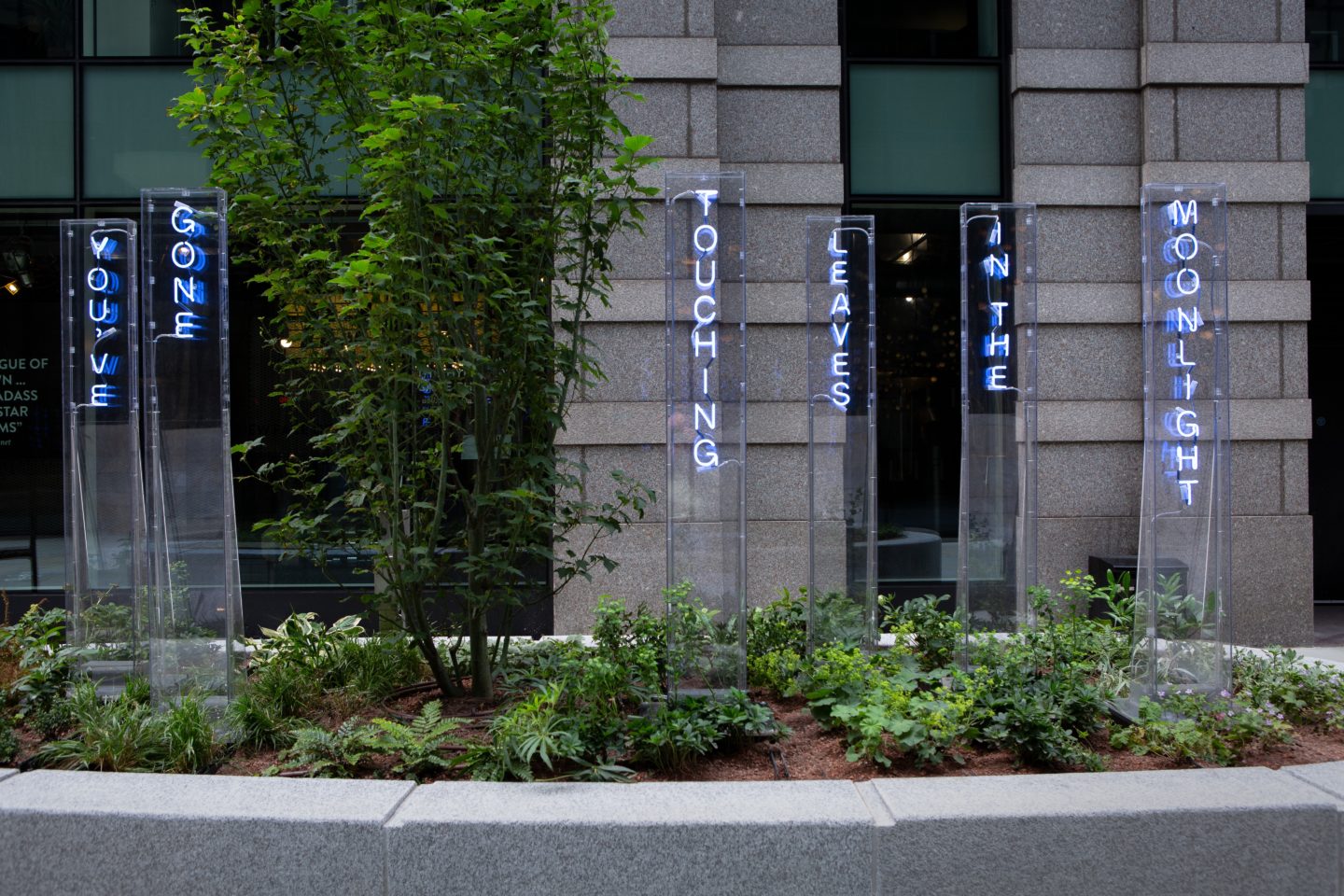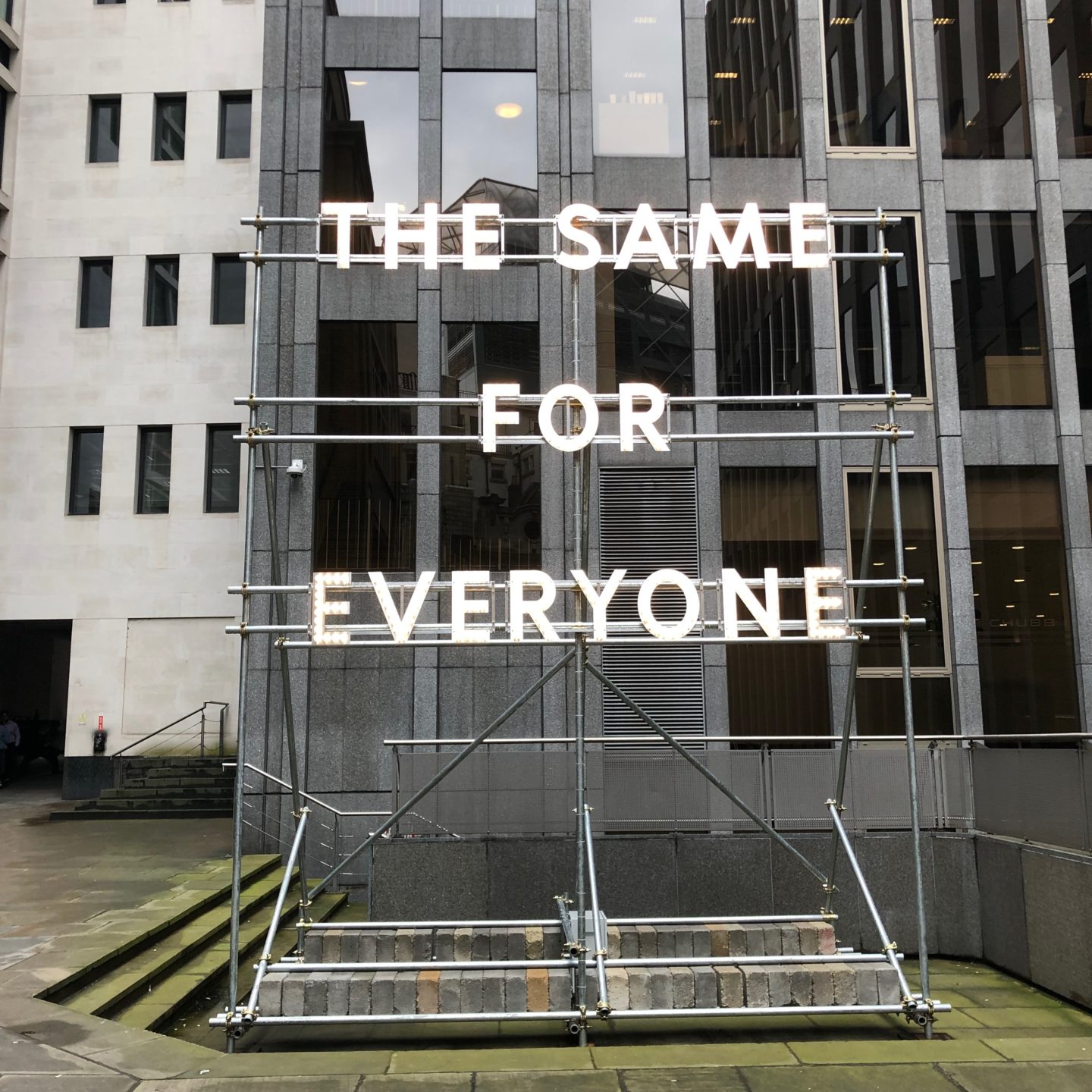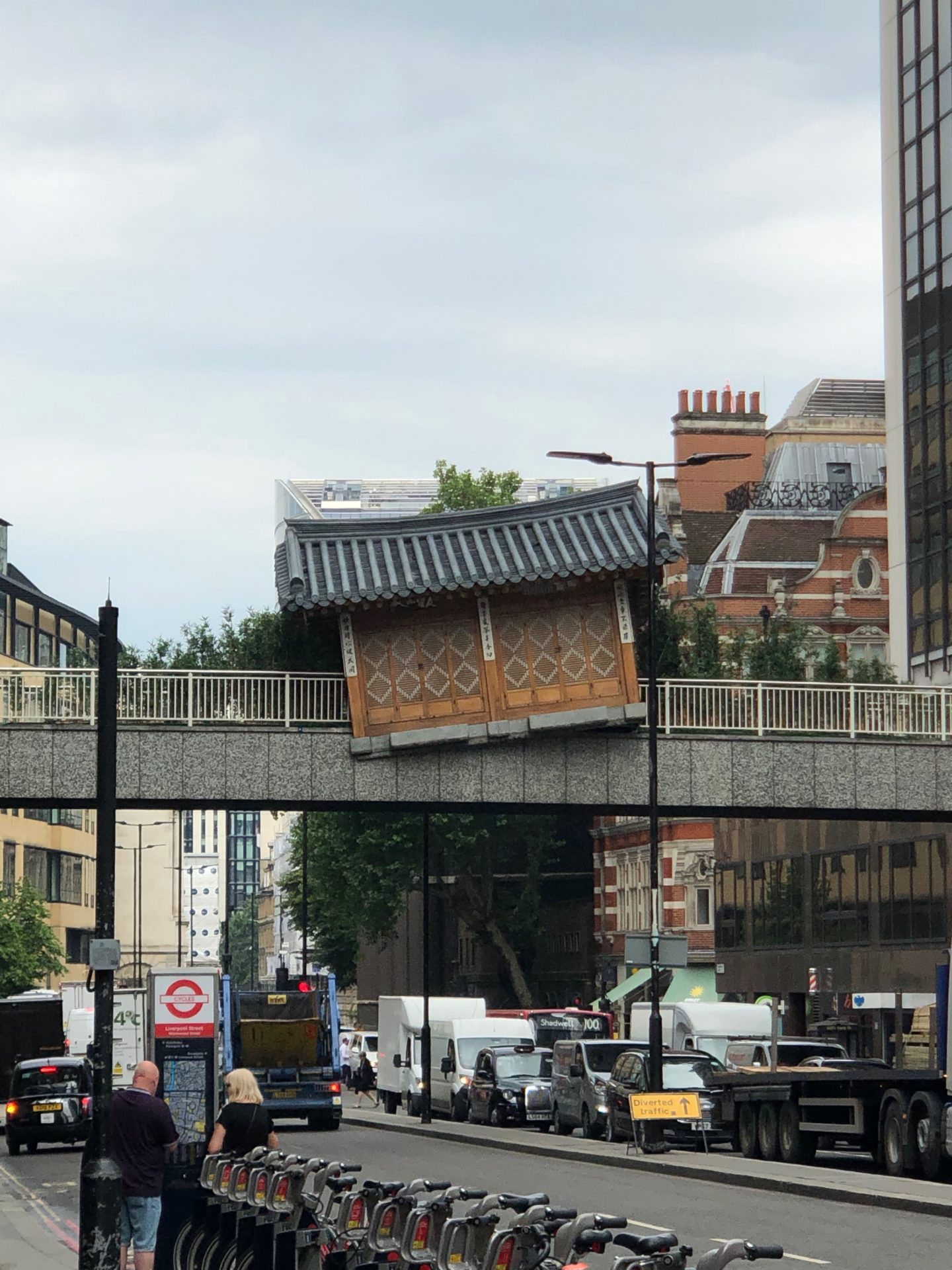
I don’t think I need to start this post by waxing lyrical about how much I love London. If I won the Euromillions I’d genuinely love nothing more than getting out and about in the city every single day, exploring another nook or cranny. It’s over 17 years since I arrived to find a place I could call home and I love it even more now than I did then. Earlier this week I was very kindly invited on a guided tour of Sculpture in the City and of course it was right up my alley so off I trotted in my best walking shoes.
Sculpture in the City is now in it’s 9th year and is the City of London’s public art programme set amongst iconic architectural landmarks. If you’re not familiar with the term ‘City of London’ it typically refers in general to the original financial district around Bank, Liverpool Street, Aldgate and so on. It’s not a part of London I know terribly well and until the event I’d never set foot inside historical institution Leadenhall Market, shame on me!
The whole area is categorised by swathes of emerging glass and steel structures, most people have heard of the Gherkin, the Walkie-Talkie and the Cheesegrater (we do love a good nickname). Yet despite the ferocious pace of capitalism and ever-changing landscape, this is still an extremely engaging part of London with so many little original alleyways and streets to explore. Modern buildings are everywhere you look but the overwhelming sense of history still pervades.

It maybe a tightly packed district but Sculpture in the City provides some respite from the formidable greyness. As they say:
Sculpture in the City is an annual urban sculpture park set amidst the iconic architecture of the City’s insurance district. Every summer, the City of London in partnership with local businesses, unveils a brand new selection of artworks by internationally acclaimed and emerging artists.
World-class contemporary sculpture complements the unique architectural quality of the area and engages the passers-by, who range from local workers to architectural tourists and other visitors, and animates one of the most dynamic parts of the City of London.
Now celebrating its 9th edition, Scultpure in the City has shown 94 artists and 112 artworks to date, continuing to grow from strength to strength.
When I used to work at the More London complex by London Bridge station, I felt so lucky that we had the river as respite from the corporate landscape. Businesses and landowners now realise the importance on city workers health of providing wellness opportunities and establish offerings to encourage engagement with the outdoors to take a break and get some of that lovely fresh London air. Imagine a little meander round some captivating artworks on your lunch break.
So what did I love the most on the tour? Well, how long is a piece of string. Here’s a few of my favourites but I don’t want to show you everything so you can go and explore for yourselves.
The Source by Patrick Tuttofuoco

Suspended from the ceiling in Leadenhall Market is this spectacular neon light and steel structure. Tuttofuoco has proven his skill in capturing the vibrations of social, urban, and collective contexts, sowing public and private spaces with works that have become a part of the urban landscape over time. The neon lights The Source depict the artist’s hands as he mimes some words conveyed using a sign language liberally inspired by those of youth subcultures.
Botanic by Jennifer Steinkamp

Inset into the ceiling at 10 Fenchurch Avenue, this sensational video installation is just stunning. Botanic is inspired by the garden plans for the Standford Wildflower Seeding Project and the garden at the Stanford Hospital. A botanical garden is a collection of plants labelled with their botanical names typically housed in an educational context. The flowers are animated with a cubic framework which utilizes the outer edges of the video wall. The flowers are blown by an unseen force causing them to collide with each other and the frame. They break apart into a diaspore of seeds, twigs, leaves and petals. The piece loops forwards and backwards breaking apart and coming back together.
The Same For Everyone By Nathan Coley

Illuminated text and scaffolding, located at Cunnard Place and one that I just can’t stop thinking about considering the current times we live in. Originally commissioned as part of Aarhus 2017-European Capital of Culture. Nathan Coley is interested in the idea of ‘public’ space, and his work explores the ways in which architecture becomes invested – and reinvested – with meaning. Across a range of media Coley investigates what the built environment reveals about the people it surrounds and how the social and individual response to it is in turn culturally conditioned. He is best known for a series of illuminated text works that take found phrases and by placing them in new contexts creates a powerful ambiguity of meaning. Here the phrase ‘The Same For Everyone’, which the artist first encountered on a hand-painted sign in Denmark, might be read as either a question, provocation, utopian proposal or a statement of protest.
Sari Garden by Clare Jarrett

A fabric, timber and vinyl installation the length of Heneage Lane. The sari is a traditional form of clothing: a single six metre length of cloth, worn wrapped and draped around a woman’s body. This diverse, multipurpose garment is integral to women’s lives, connecting them to status and age. They use it to hold hot pans, to wipe their children’s faces, and to clean their homes. Saris are known to catch fire, burning their wearers. Some women use their saris to hang themselves when life becomes unbearable. This work consists of sari-like lengths, sewn together, hanging from a beam stretching the length of Heneage Lane and supported by its lamp posts. Its softness echoes aspects of women’s lives, of domesticity, of laundry put out to dry, and of subjugation or flirtation. From a distance the splashes of colour give the feeling of a long narrow painting.
Honestly it’s so hard to pick just a handful but otherwise this post will be never-ending. There is so much to see at Sculpture in the City, to engage with and enjoy. Last but by no means least however, I was equally impressed to learn about their education programme. I grew up in the countryside (at least relative to the size of London anyway) and I’m always intrigued about schools in on the world’s biggest cities simply because it’s so different to what I knew growing up.

Sculpture in the City offers exciting opportunities for young people to engage with the City of London through an extensive educational programme delivered by Urban Learners. This summer, working with architects and partner company volunteers, 200 students from 9 local schools will participate in a total of 36 workshops that explore the City public spaces and neighbouring buildings (before and after the sculptures are installed) and creatively respond to the public spaces and sculptures.
These customised workshops represent a significant element of the Sculpture in the City overall programme and benefits students, aged 10-14 years old, from neighbouring borough schools. These schools have students from under-represented communities, many of whom have never visited the City before, and/or are unlikely to consider the City, art or the built environment as career and cultural pathways options. Through the series of four workshops, the students discover new places in the city and learn about the value of public art.
London. It’s a place that so many think is lonely, isolating, dangerous, busy. Once you open your heart and mind though to all the possibilities, it’s most definitely the best city in the world.
I was kindly invited on a tour of the installations by Sculpture in the City but under no obligation to share a post. I really enjoyed it and hopefully one or two of you might pop over for a visit.